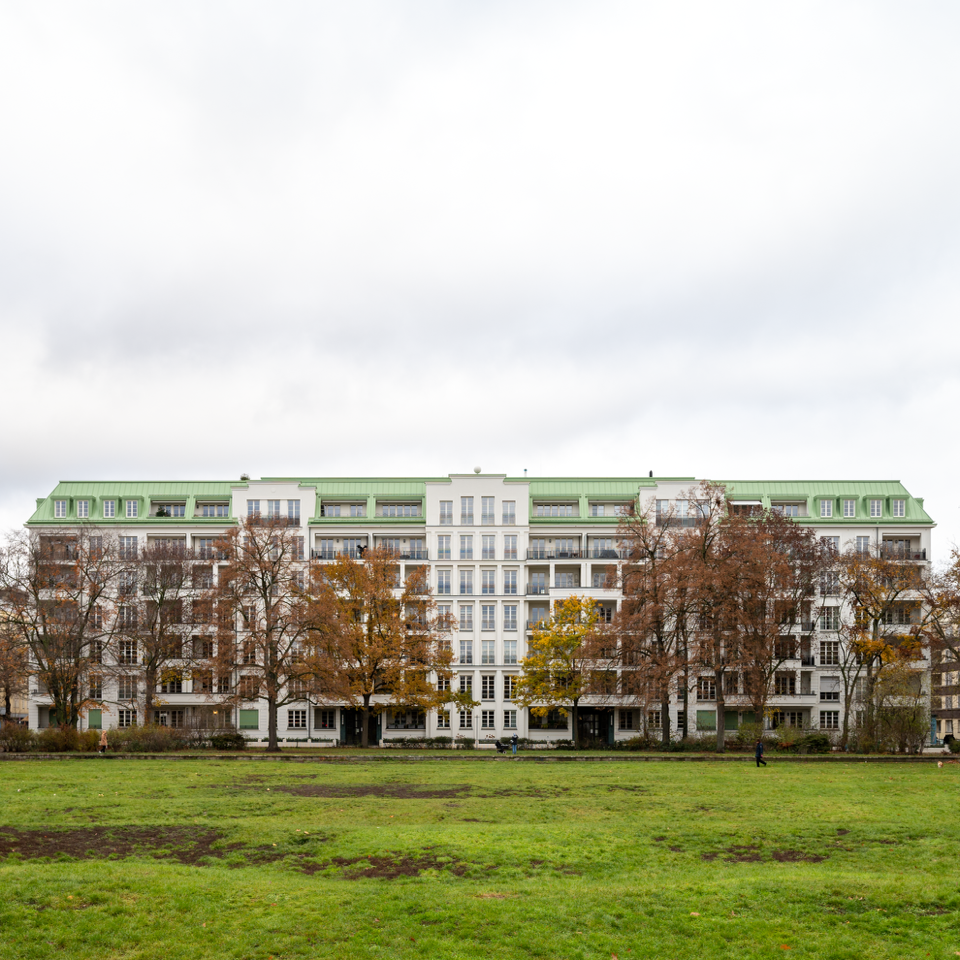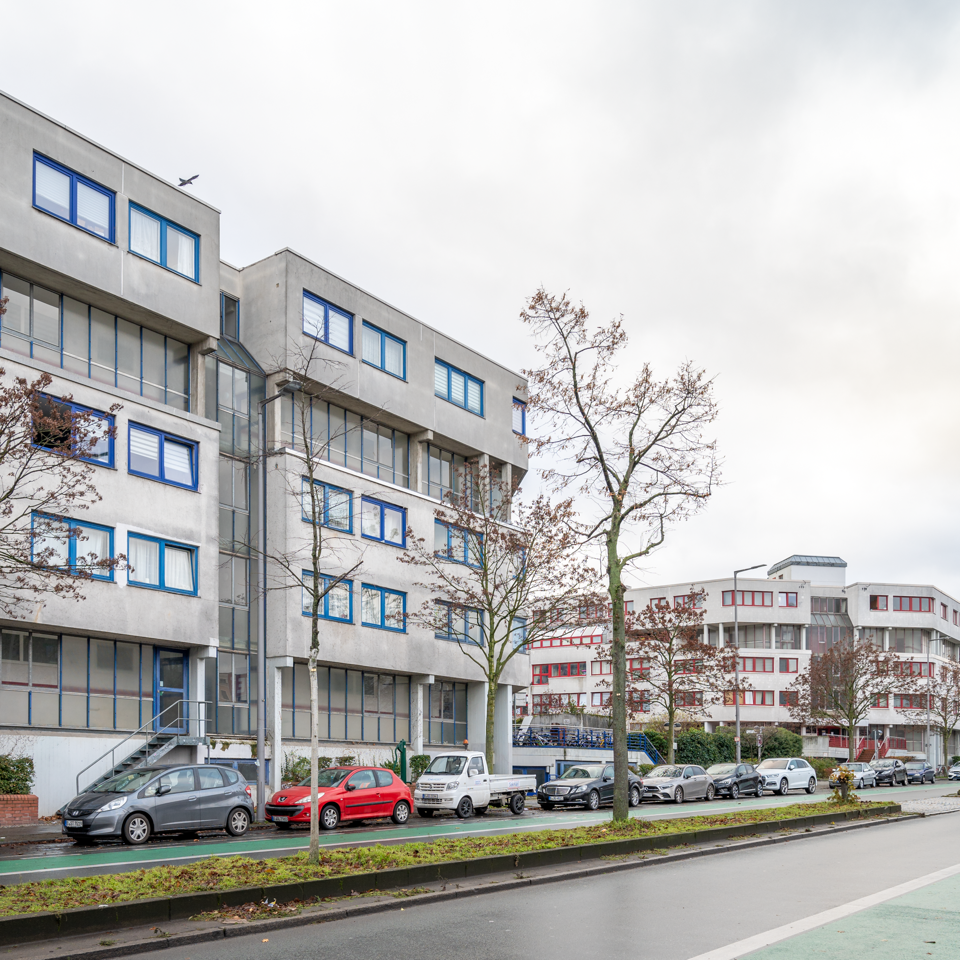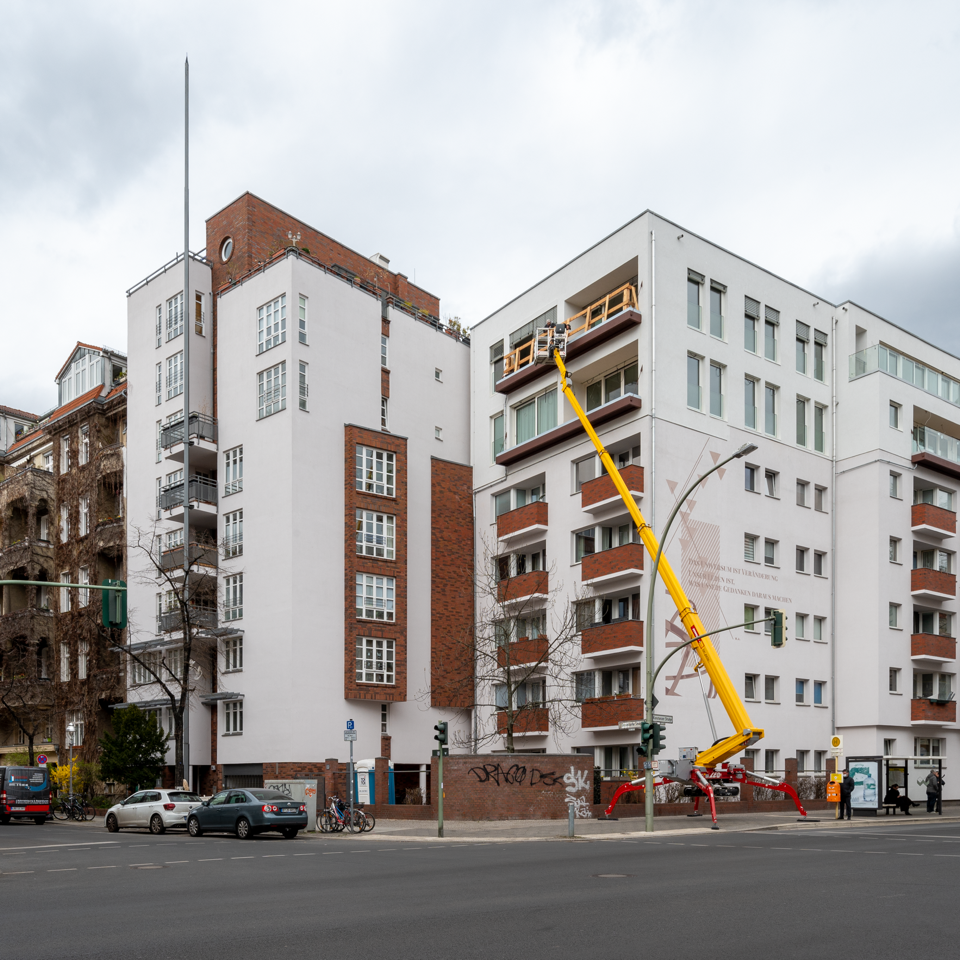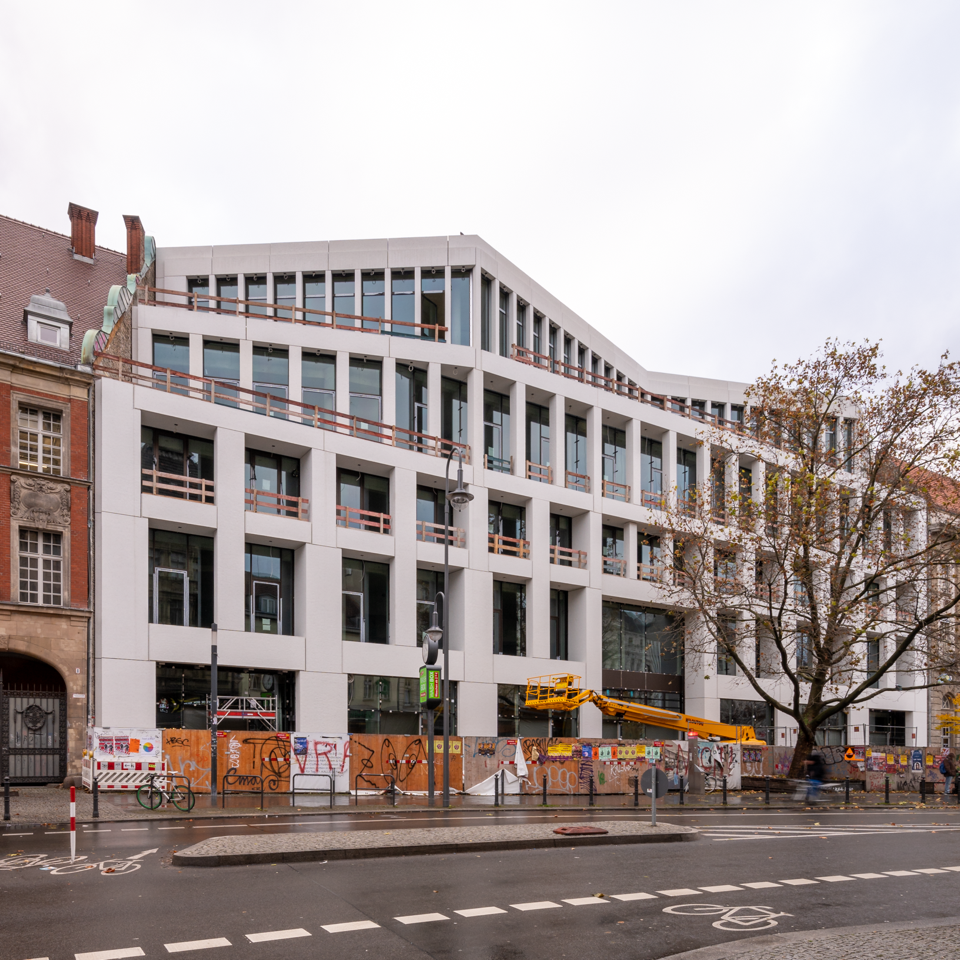Do the increased construction costs have an impact on architecture?
As an broker for real estate loans, we deal with architecture on a daily basis without perceiving it as such. In order to be able to offer you the best possible financing, we think about usable space, net cold rents, and contaminated sites on a daily basis. In the process, we easily lose sight of the social and aesthetic aspects of building. In this column, we want to take a different look at our work.
In recent years, profits in new residential construction have been achieved primarily on the largest possible vacant lots, where the exploitation of planning economies of scale has resulted in relatively uniform architecture. Before taking a long look at the existing building stock, analyzing the condition of the substance and examining the possibilities of conversion or expansion, it was preferred to demolish the building and realize a new construction according to a tried and tested scheme.
For this building on Berlin's Hochmeisterplatz, completed in 2020 by the architectural firm Hilmer Sattler, for example, the neo-Saxon post office (Willy Hoffmann, 1933) was demolished, although its free floor plan could easily have been adapted to another use.
In view of the increased construction costs and the shortage of skilled workers, the question arises as to whether this trend will continue in the coming years. In the future, it could pay off in more and more cases to accept additional planning costs, for example, in order to maintain, expand or convert an office building from the post-war period.
A look back at the 1970s shows that the rapid rise in construction costs as a consequence of the first oil crisis caused a rethink in West German urban development policy. Until then, it had been common practice in the course of modernization processes to completely demolish entire streets and replace them with large-scale residential machines (area redevelopment).
For the construction of the Neukölln Rollbergsiedlung - an advanced project of social housing - 5600 old apartments were demolished in the early 70s, although they had survived the Second World War mostly intact.
Due to increased construction costs, it was no longer profitable to demolish intact buildings and replace them with material-intensive new buildings. As a result, material prices forced a reassessment of the architectural stock.
Suddenly, old buildings were no longer regarded as an expression of pre-modern urban planning that had to be overcome, but were worth preserving per se as a rich mesh of different eras. From then on, new buildings had to fit in among the historical fragments according to the guiding principle of careful urban repair.
In the narrow gap between the old building (left) from 1915 and the row building from the 1960s (right), a residential tower was inserted in the 1980s. Recently, two stories were added to the post-war part of the building.
Currently, more and more office and residential buildings from the post-war period are having to make way for new plans. But against the backdrop of increased construction costs, it is questionable whether this trend will continue in the coming years. At the very least, it is conceivable that a reassessment of the architectural stock similar to that of the 1970s will soon become inevitable. This development would not only have a major impact on architecture. Rather, the saving of gray emissions also counteracts global warming.
In the center of Neukölln (Berlin), Max Dudler and Aukett + Heese Architekten are converting a former Quelle department store, complete with elevated garage, into a creative center with offices, co-working units, retail, restaurants and a roof garden.

Author
Sebastian Freiseis
studied German language and literature, philosophy, and literary and cultural theory at the Eberhard Karls University in Tübingen and the University of Nebraska-Lincoln.







